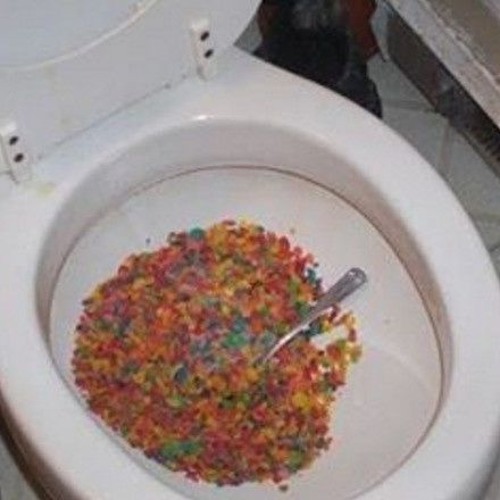Are You Allowed to Dispose of Food in the Toilet?
Are You Allowed to Dispose of Food in the Toilet?
Blog Article
Have you been interested in guidance around Is it safe to flush food (especially rice) down the toilet??

Intro
Many people are usually faced with the problem of what to do with food waste, especially when it comes to leftovers or scraps. One typical concern that develops is whether it's all right to flush food down the commode. In this post, we'll look into the reasons that individuals might consider flushing food, the repercussions of doing so, and alternate approaches for appropriate disposal.
Reasons why people could think about purging food
Lack of recognition
Some people might not be aware of the possible damage triggered by purging food down the bathroom. They may mistakenly think that it's a harmless practice.
Ease
Flushing food down the toilet might appear like a fast and very easy remedy to dealing with unwanted scraps, especially when there's no neighboring trash can available.
Negligence
In some cases, people may simply choose to flush food out of large idleness, without taking into consideration the effects of their actions.
Effects of flushing food down the commode
Ecological effect
Food waste that ends up in waterways can add to pollution and injury water environments. Furthermore, the water utilized to flush food can strain water sources.
Pipes concerns
Purging food can bring about clogged pipes and drains, causing expensive pipes repair work and hassles.
Kinds of food that need to not be flushed
Fibrous foods
Foods with coarse textures such as celery or corn husks can get entangled in pipes and create obstructions.
Starchy foods
Starchy foods like pasta and rice can soak up water and swell, resulting in clogs in pipelines.
Oils and fats
Greasy foods like bacon or food preparation oils must never ever be flushed down the bathroom as they can solidify and create blockages.
Correct disposal approaches for food waste
Using a waste disposal unit
For homes outfitted with waste disposal unit, food scraps can be ground up and flushed through the pipes system. Nonetheless, not all foods are suitable for disposal in this way.
Recycling
Specific food packaging products can be reused, minimizing waste and decreasing environmental effect.
Composting
Composting is an eco-friendly means to take care of food waste. Organic products can be composted and used to enrich soil for gardening.
The relevance of correct waste management
Decreasing ecological harm
Appropriate waste administration practices, such as composting and recycling, help reduce contamination and preserve natural resources for future generations.
Protecting pipes systems
By avoiding the method of flushing food down the bathroom, homeowners can avoid pricey plumbing repair work and keep the integrity of their pipes systems.
Conclusion
To conclude, while it might be tempting to purge food down the toilet for comfort, it is necessary to recognize the prospective consequences of this action. By taking on appropriate waste monitoring methods and taking care of food waste properly, people can add to much healthier pipes systems and a cleaner environment for all.
FLUSH FOOD DOWN THE TOILET?
FLUSHING FOOD CAN CAUSE BLOCKED DRAINS IN YOUR HOME
All of the plumbing fixtures in your home are connected to the same sewer pipe outside of your home. This outdoor sewer pipe is responsible for transporting all the wastewater from your home to the Council sewer mains. Even small pieces of food that go down the kitchen sink can cause problems for your sewer. It should therefore be obvious that flushing larger bits of food, such as meat, risks a clog in either the toilet itself or the sewer pipes. Flushing greasy food is even more problematic because oil coagulates when it cools, coating the interior lining of your pipes.
THE TOILET IS NOT A BIN
Food isn’t the only thing that people shouldn’t be flushing down the toilet. People use the toilet to dispose of all kinds of things such as tampons, makeup wipes, dental floss, kitty litter and even underwear. Water goes to great lengths to educate residents about the high costs and stress placed on wastewater treatment systems simply from people flushing the wrong stuff down the toilet. It costs taxpayers millions of dollars each year, and homeowners thousands in blocked drain repairs.
FLUSHING FOOD IS A WASTE OF WATER
Flushing food is a waste of our most precious resource - water. In June this year Level 1 water restrictions were introduced to protect water supply from drought conditions. Much of New South Wales continues to be affected by prolonged drought with recent figures revealing up to 97 per cent of the state remains in drought. Depending on whether you have a single or dual flush toilet, every single flush uses between five and 11 litres of water. In the current climate this is a huge amount of water to be wasting on flushing food that should be placed in the bin (or better yet, the compost).
https://www.jabplumbingsolutions.com.au/blog/can-you-flush-food-down-the-toilet

As a keen person who reads on What Can Happen If You Flush Food Down the Toilet?, I assumed sharing that excerpt was a great idea. Appreciated our write up? Please quickly share it. Help somebody else locate it. Thank you for going through it.
Visit My Web Page Report this page